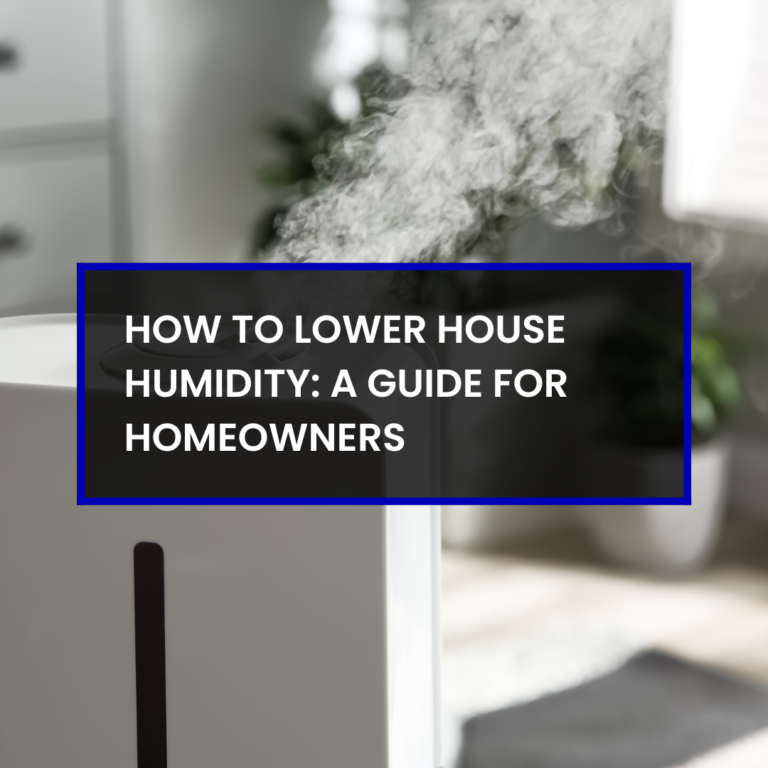Understanding how to lower house humidity is critical because humidity plays a pivotal role in shaping the comfort and healthiness of our indoor environments. Balancing indoor humidity levels is crucial not only for personal well-being but also for the preservation of our homes. This balance can be disrupted by various factors, leading to conditions that are either excessively dry or moist, which can have detrimental effects on both the structure of our buildings and our health. Grasping the dynamics of indoor humidity is the initial step in creating a more comfortable, healthier living space.
Understanding Humidity Levels
Humidity is the concentration of water vapor present in the air, and understanding its levels is crucial for maintaining a comfortable and healthy living environment. Ideally, indoor humidity should be between 30% to 50% to balance comfort and health. However, when levels rise above this range, it can lead to discomfort and various health issues. Knowing how to lower house humidity is not just about comfort; it’s about creating a living space that promotes well-being and preserves the integrity of your home.
The Impact of High Humidity on Your Home and Health
High humidity levels in a house can have several adverse effects, from promoting the growth of mold and mildew to causing wooden structures to warp. It can also exacerbate allergies and respiratory problems for the inhabitants. Understanding how to lower house humidity is essential in preventing these issues, ensuring your home remains a safe haven. Regularly monitoring humidity levels and taking proactive measures can significantly mitigate these risks, enhancing both the durability of your home and the health of its occupants.
Practical Steps on How to Lower House Humidity
The quest to maintain ideal humidity levels within a home is a multifaceted challenge that requires a combination of strategies and tools. From leveraging technological solutions to adopting natural methods, homeowners have various avenues to explore in their efforts to create an optimal living environment.
Improving Ventilation to Reduce Humidity
One effective method to lower house humidity is by improving ventilation, especially in areas prone to moisture like bathrooms and kitchens. Installing exhaust fans can help expel moist air outside, preventing it from circulating throughout your home. Opening windows during drier days also promotes air circulation, further aiding in reducing indoor humidity levels. Enhanced ventilation is a simple yet effective strategy in the broader scope of how to lower house humidity.
Utilizing Dehumidifiers Effectively
Dehumidifiers play a pivotal role in extracting excess moisture from the air, making them a key tool in how to lower house humidity. For optimal results, place dehumidifiers in areas where humidity levels are consistently high, such as basements or laundry rooms. Regularly emptying the water collection reservoir and cleaning the device ensures its efficiency and longevity. Selecting a dehumidifier with a capacity appropriate for your space can significantly contribute to maintaining desired humidity levels.
Incorporating Moisture-Absorbing Plants
Integrating moisture-absorbing plants into your home decor not only enhances the aesthetic appeal but also contributes to lowering indoor humidity. Plants such as peace lilies, Boston ferns, and English ivies naturally absorb moisture through their leaves, offering a green solution to the challenge of how to lower house humidity. Positioning these plants throughout your home can aid in achieving a more balanced indoor humidity level, while also purifying the air.
Additional Measures to Control Humidity
Beyond the standard solutions for managing indoor humidity, there are additional, often overlooked strategies that can significantly impact the moisture levels in a home. These methods focus on preventing the introduction of excess moisture and improving the home’s ability to maintain a stable, comfortable humidity level.
Sealing Leaks and Improving Insulation
Ensuring your home is well-sealed and insulated is a fundamental step in controlling indoor humidity levels. Leaks around doors, windows, and in the roof can allow excess moisture to enter, challenging efforts on how to lower house humidity. By sealing these leaks and enhancing insulation, you can prevent outdoor humidity from infiltrating your home, maintaining a more consistent and comfortable indoor environment.
Managing Indoor Plants and Water Usage
While certain plants can help reduce humidity, too many indoor plants can contribute to higher moisture levels. Being mindful of the number and types of plants in your home is part of understanding how to lower house humidity. Similarly, reducing water usage in daily activities, such as taking shorter showers and fixing leaky faucets, can also help decrease indoor humidity, showcasing the multifaceted approach required to effectively manage indoor air quality.
The Role of Professional HVAC Solutions
Professional HVAC solutions represent a critical component in the management of indoor air quality, including the regulation of humidity levels. These systems, when properly installed and maintained, offer a robust defense against the challenges posed by fluctuating humidity.
The Importance of Regular HVAC Maintenance
Regular maintenance of your HVAC system is crucial in preventing humidity issues before they start. A well-maintained system operates more efficiently, circulating air and removing moisture effectively. This proactive approach is key in how to lower house humidity, ensuring your home remains comfortable throughout the year.
Introducing Hometown Heating’s Carrier Humidifiers
At Hometown Heating, we understand the importance of maintaining optimal indoor air quality. That’s why we offer Carrier humidifiers, designed to improve air quality and comfort in your home. These systems are expertly installed by our team, providing precise humidity control that can enhance the overall environment of your home. Trusting Hometown Heating with your HVAC needs means choosing a partner committed to helping you understand how to lower house humidity with advanced, reliable solutions.
Frequently Asked Questions
What are the signs that your house has high humidity levels?
Signs include condensation on windows, musty odors, and the presence of mold or mildew, indicating a need for strategies on how to lower house humidity.
How often should HVAC systems be checked to maintain optimal humidity levels?
HVAC systems should be checked and maintained at least annually to ensure they effectively manage air circulation and humidity, contributing to lower house humidity.
What is the impact of high humidity on health?
High indoor humidity can exacerbate allergies and respiratory issues, underlining the importance of knowing how to lower house humidity for health reasons.
Why is it important to regularly empty and clean dehumidifiers?
Regular maintenance ensures dehumidifiers operate efficiently, crucial in the strategy of how to lower house humidity.
Why is air circulation important in managing house humidity?
Good air circulation helps distribute and reduce moisture evenly, which is essential in how to lower house humidity.
How do exhaust fans contribute to lower house humidity?
Exhaust fans remove moist air directly from areas like bathrooms, preventing it from raising overall house humidity.
What are the benefits of integrating Hometown Heating’s Carrier humidifiers into your home?
Installing Carrier humidifiers enhances air quality and comfort, offering a reliable solution in how to lower house humidity.





